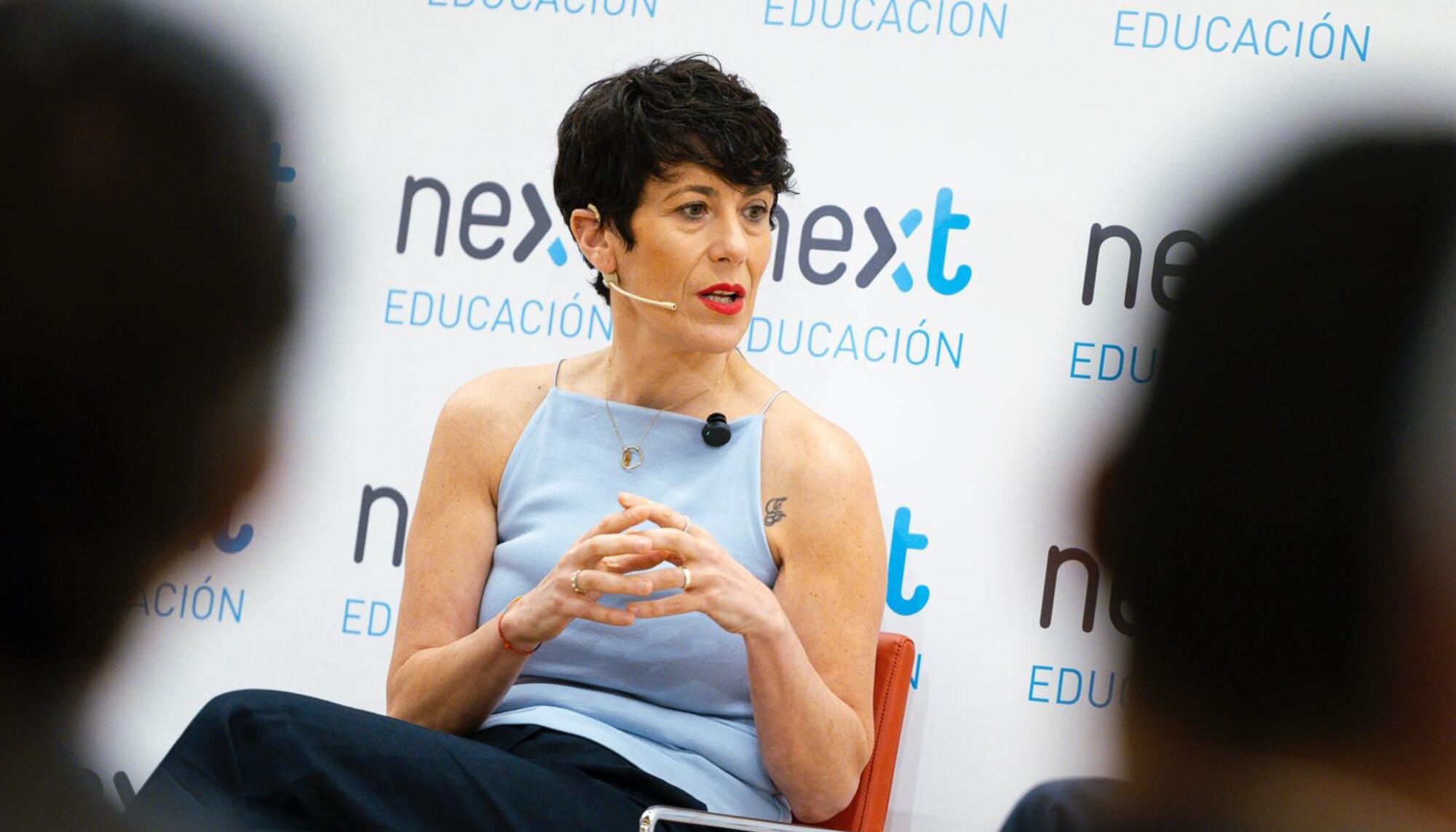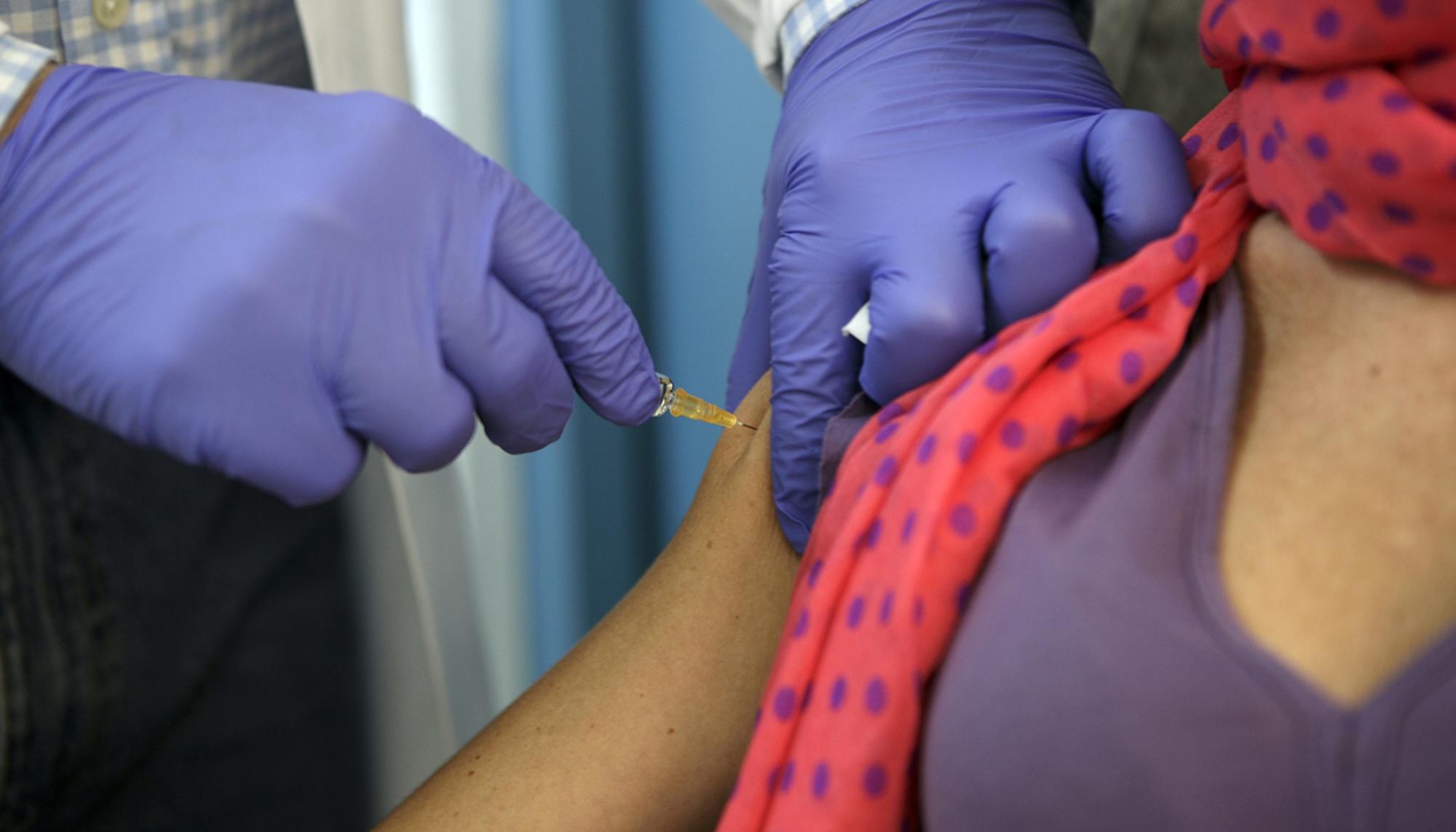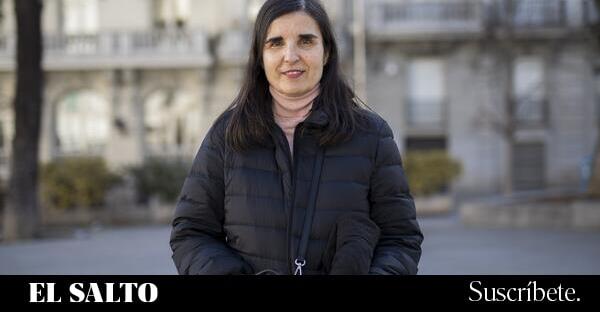


Susana Puchalt has persistent covid and myalgic encephalomyelitis / Chronic Fatigue Syndrome derived from three covid infections. He was on sick leave for a year and a half, the maximum allowed by legislation, and the National Social Security Institute (INSS) denied him permanent disability. She is a teacher and had to return to work with weakness, dizziness, nausea, brain fog and huge headaches. It belongs to the Persistent Mobilization platform, which brings together around 300 people who suffer from these two diseases. The majority have suffered automatic discharges from Social Security, forced to go to work sick, he denounces. “With the experience of the labor problems that arise from our situation, the proposal to implement flexible sick leave seems to us to be a measure that will not exactly benefit the workers,” says Leticia Bravo, spokesperson for the ATEAVA sick association. , who describes that the path followed by more than a hundred members of his association has been the same: from bed to work out of obligation.
On October 3, and during a breakfast with the press at Nueva Economía Fórum, the Minister of Social Security, Elma Saiz, surprised by putting a new measure on the fore. He assured that he was going to create a negotiating table with social agents to reform temporary disability in which he would propose “flexible sick leave” that would allow people to be on medical leave and at the same time work “voluntarily.”

“There are processes, for example, someone who is leaving or in the process of cancer treatment, who perhaps voluntarily and guaranteeing their health and safety can go to work with a temporary disability that is not or being discharged or Or in cases of multiple activity, people who are on leave in one activity and in another can carry out certain jobs,” he stated.
Statements that unleashed an earthquake of union complaints, and opposition from the Ministry of Labor, due to the possible lack of protection of sick workers in favor of the employers. “We are not going to consent to any variation or distortion in the temporary disability as we have conceived it,” said Minister Yolanda Díaz. Days later, the Secretary of State for Social Security, Borja Suárez, came out to clarify what was stated. After the meeting with the social agents, Suárez explained that any change in the status of temporary disability will entail medical supervision. And, in any case, the “graduality” in the incorporation of the worker will take place after receiving discharge. It also removed the word “voluntary” from the equation.
This Monday, Lorenzo Amor, president of the National Federation of Self-Employed Workers Associations, ATA, returned to the fray. While presenting the Self-Employed Award of the year to the Spanish Association Against Cancer (AECC), and in the presence of Minister Saiz, he demanded flexible sick leave so that chronically ill people can “work and receive a benefit.” The minister responded to Amor by assuring that they will work to “move towards new models in which from the public we can offer a greater range of rights to cancer patients.”
Chronically ill patients agree that, beyond flexible sick leave, their priority is not to be left helpless in the face of systemic discharge granted by the INSS.
A probe balloon propelled from the mutuals
Chronic patients consulted for this report agree that, beyond the flexible discharges, their priority is not to be left helpless in the face of the systemic discharges granted by the INSS. “They are already giving us flexible sick leave, they make us come back when we are sick,” says Susana Puchalt ironically, who recognizes that during her sick leave process, in which she has experienced ups and downs, there are times when she has thought about returning to work. . “There was a moment when I was feeling better and I asked to join a part-time job and the answer was that I couldn’t. But I am afraid that employers will resort to this type of solution to put more pressure on the worker who is sick. In the case of chronically ill patients, mMore than flexible sick leave, we need our disability to be recognized,” he says.

What is worrying is where the proposal to reform temporary disabilities comes from, which the Government claims responds to demands from associations of cancer patients. From USO they point out as precursors to the Association of Work Accident Mutual Insurance Companies (AMAT) who in their report Work absenteeism derived from temporary disability due to common contingenciespublished in 2023, they clearly propose it on page 41: “i“include the possibility of implementing temporary partial disability, which makes it possible to make treatment compatible with partial return to work, and temporary disability in multiple employment.”
“Both workers and physicians are being criminalized instead of reviewing what is happening due to the high percentage of sick leave due to common and professional contingencies,” they say from USO.
For Sara García de las Heras, Secretary of Union Action of USO, the minister’s proposal was a “probe balloon” launched “without foundation” that “is marking a discourse that seems dangerous to us” and in favor of mutual insurance companies. ““You cannot speak with that lightness about the health of workers,” he says. On the one hand, low and pluriactivity already exist. From USO they give an example: We can have a job as a warehouse waiter and another telephone customer service job on the weekend. If we suffer from low back pain, the doctor will temporarily incapacitate us for our warehouse work, but we can continue working as a teleoperator.
On the other hand, there is a dangerous discourse framed by an increase in absenteeism that coincides with an increase in active workers after the pandemic. “In Spain in 2023, there were more than 8,100,000 sick leave due to illnesses and non-work accidents, which represented a cost of more than 25,300 million euros in economic Social Security benefits and direct costs for companies, this expense having grown by more 74% in the last five years,” they detail in the mutuals’ report.
And, despite the fact that the Ministry of Social Security has tried to back down, the run run that links temporary disabilities with fraud has already been brought into the story, explains García, coIt would be like if all the doctors and workers were in league to commit fraud. “Both workers and physicians are being criminalized, instead of reviewing what is happening due to the high percentage of sick leave due to common and professional contingencies.”
“A flexible leave will mean what is already happening: people who are not fit have to rejoin because their leaves are not extended, their disabilities are not recognized, they do not have adaptations to their jobs,” USO denounces.
Regarding the chronically ill, explains de las Heras, there are much more important pending issues such as the recognition of their conditions as work contingencies when this is the case, which represents an economic loss and a reduction in their conditions. This is the case of the sick men and women who are represented by ATEAVA, whose acronym stands for Association of Essential Workers Affected by the Astrazéneca Vaccine. That is, they are officials who were the first to be vaccinated against covid with the vaccine that was finally withdrawn due to its side effects and there is a direct link between the decision to access the first vaccines and their profession.

Majority of women among the sick
“A flexible leave will mean what is already happening: people who are not fit have to return because their leave is not extended, their disabilities are not recognized, they do not have adaptations to their jobs,” the spokesperson says. of USE.
Mirror in which patients with persistent covid or fibromyalgia look at themselves, diseases that have a greater prevalence among women, since they are of autoimmune origin and they have immune responses, both innate and acquired, stronger than men.
“I had to ask for a two-month unpaid leave that I am ending now. Then it’s time to return to work with all my symptoms. I am 57 years old and I have two years left to retire”, Susana Puchalt, patient with persistent covid
Furthermore, their diagnoses are complicated and often camouflaged in clinical practice. “There are many doctors who do not recognize my illness. When I started with myalgic encephalomyelitis, the doctors attributed everything to depression and that’s how they treated me for the first few years,” explains Susana Puchalt. In June 2024, and after exhausting the maximum sick leave time established by legislation, the INSS rejected his permanent disability and has already exhausted all the bullets he had in the chamber. “I had to ask for a two-month unpaid leave, which I am ending now. Then it’s time to return to work with all my symptoms. I am 57 years old and I have two years left until I retire. “I don’t know what will happen to me in these two years until I reach retirement,” he says.
Leticia Bravo denounces the “mistreatment” that chronically ill patients are receiving with sick leave and disabilities. “They want to save money from anywhere, especially with the most vulnerable”
Leticia Bravo, who is also a teacher, denounces the “mistreatment” they are receiving with casualties and disabilities. “They want to save money from anywhere, especially with the most vulnerable. The priority should be the health of the people and the conditions in which they are going to work, not that you produce at any price,” Bravo complains, while adding one last piece of information: representatives of the Ministry of Health and the Ministry of Health have met with his group. Ministry of Labor; but, so far, no door has been opened to them in the Ministry of Social Security.
